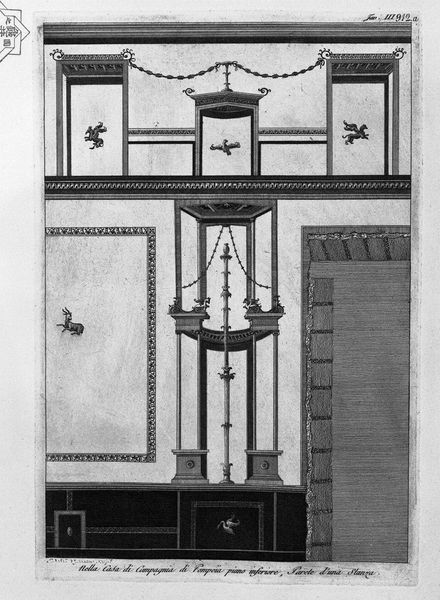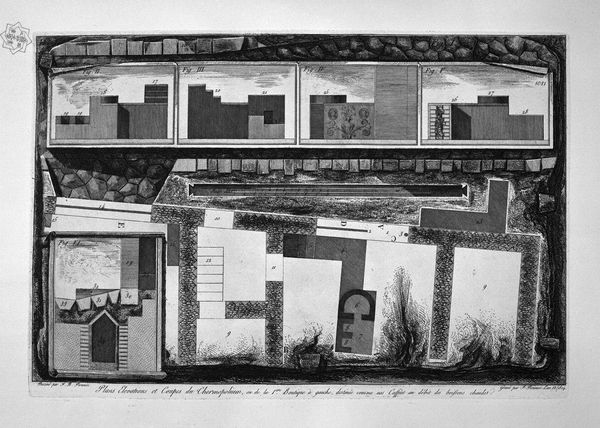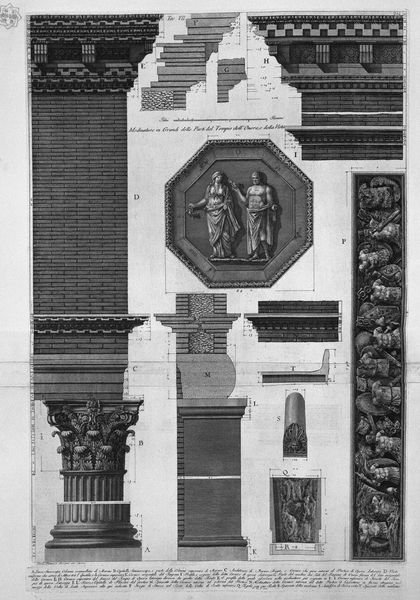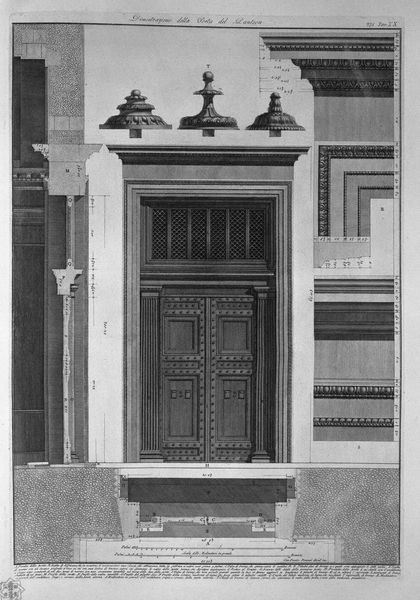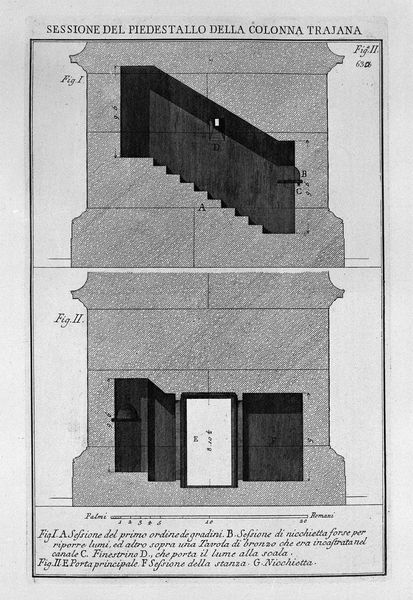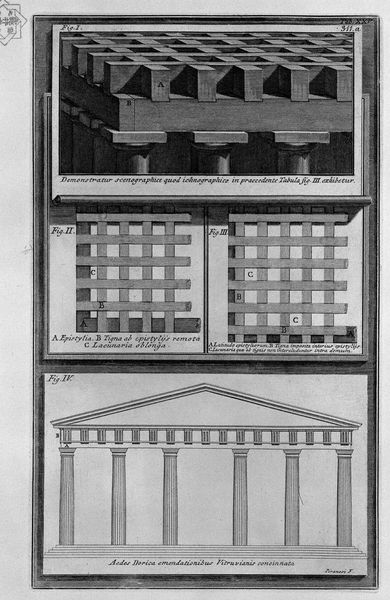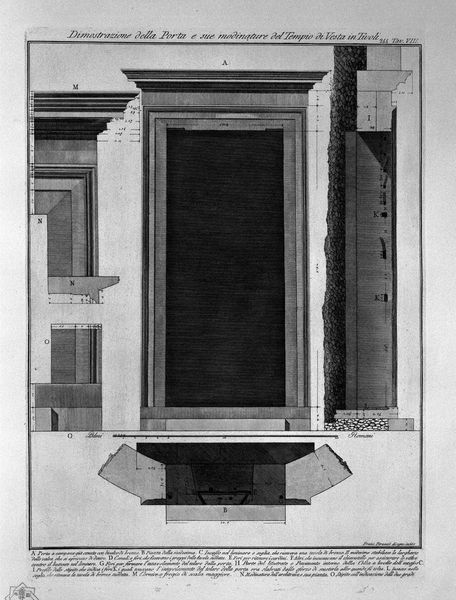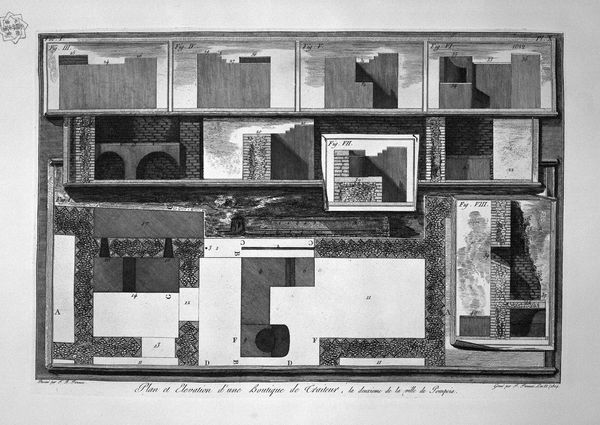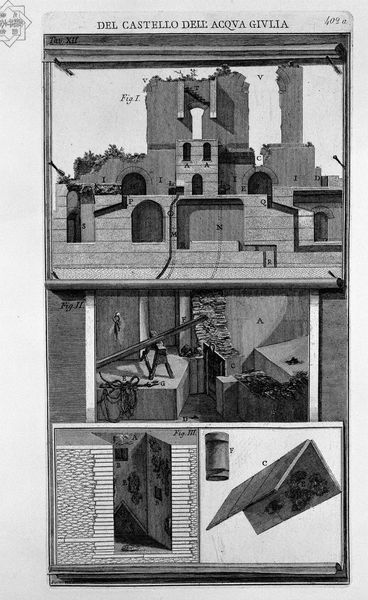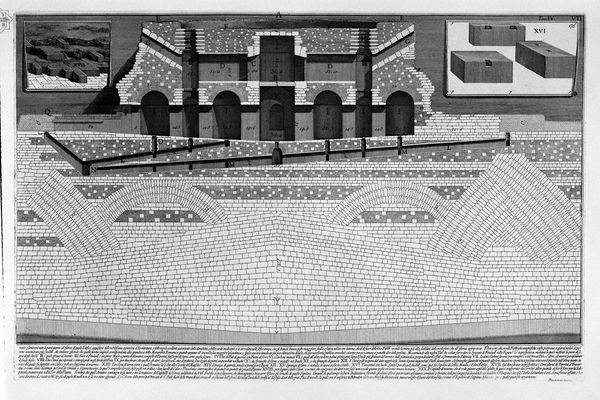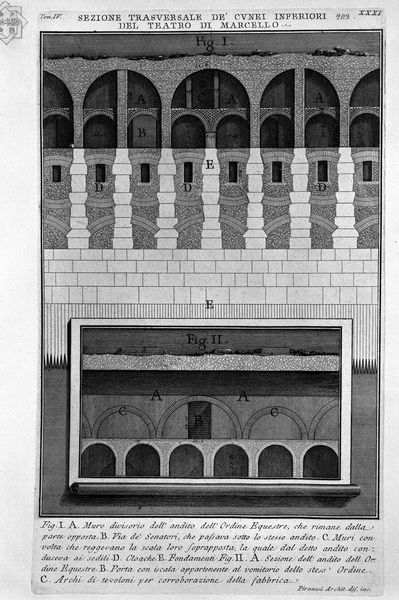
Demonstration of large parts of the second inner order of the Pantheon, now there are no more
0:00
0:00
drawing, tempera, print, etching, engraving, architecture
#
drawing
#
tempera
# print
#
etching
#
sculpture
#
architectural form
#
historic architecture
#
form
#
geometric
#
line
#
architectural
#
italian-renaissance
#
engraving
#
architecture
#
historical building
Copyright: Public domain
Curator: We're looking at Giovanni Battista Piranesi's engraving titled, "Demonstration of large parts of the second inner order of the Pantheon, now there are no more." The print gives us an insight into architectural elements related to the Pantheon, detailing parts that may no longer exist. Editor: Immediately, the first thing that strikes me is how stark it is, like an architectural autopsy laid bare on a cold steel table. It's not pretty, is it? But it has a morbid, obsessive charm. Curator: That's an interesting reading, because Piranesi, through this highly detailed etching, is connecting us to a cultural memory of a past order, presenting these isolated pieces that speak of the grandeur and the precision of Roman architecture. The geometric forms repeat and the lines work together to invoke the original structure in our minds. Editor: Sure, grandeur, precision, all those good, classical virtues. But there's also something unnerving about extracting pieces like this. Almost as if the soul of the Pantheon has been dissected and displayed—leaving you wondering what exactly was lost in its original totality, beyond geometric principles and clean lines. You get a fragmented sensation. Curator: Well, fragmentation and memory are powerful partners. Here, these isolated components, whether we consider the intricate carvings on the capital or the relief, act like cultural DNA, informing us of historical practices, aesthetic values, and even societal structures present during the time the Pantheon was fully realized. We get a glimpse of the complete monument in all its complexity through these elements, connecting us back to an ancient civilization. Editor: I get that. It's a clever way to keep something alive, isn't it? Take it apart, name the pieces, so we don’t forget. Still…a bit cold, though I can see its purpose in connecting our minds back to the architecture of its day. It is clinical and dreamlike at the same time. Almost eerie, in the same manner ruins stir something uncanny deep within us. Curator: Precisely. The choice to create an engraving – a medium with very defined lines and shades – heightens the image's ability to clearly convey essential historical information to future audiences and scholars. It functions almost as an archive. Editor: In that way, the engraving has kept those architectural fragments alive to us—beyond stone or memory alone. Thank you for walking me through a clearer perspective on that seemingly detached and technical perspective! Curator: Thank you, and it reveals the powerful connection between form and memory as a potent part of our human inheritance!
Comments
No comments
Be the first to comment and join the conversation on the ultimate creative platform.

